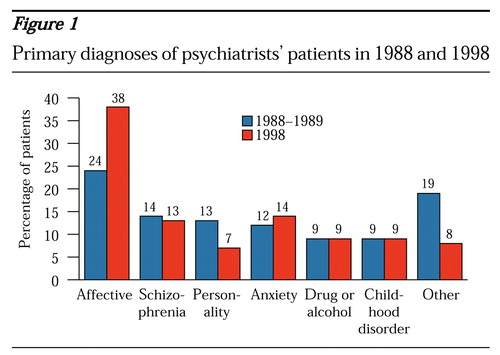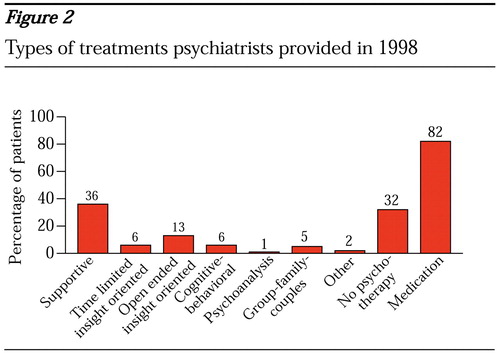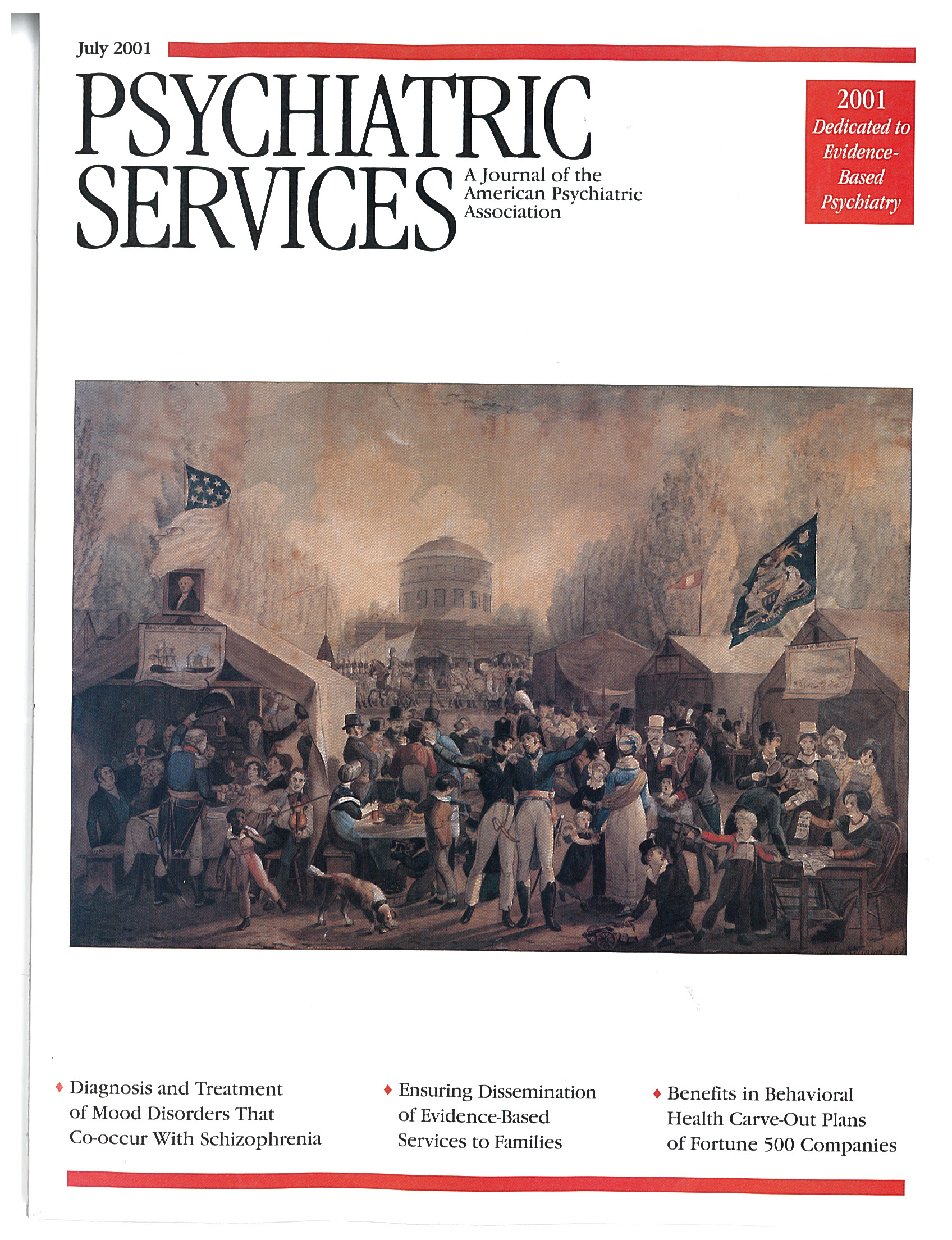Datapoints: Trends in Psychiatric Practice, 1988-1998: II. Caseload and Treatment Characteristics
During the past decade, dramatic changes have been documented in the practice of psychiatry. This column is the second in a series examining the changing characteristics of practicing psychiatrists, their activities, and provision of treatments (1). The columns are based on the results of two surveys, the 1988-1999 Professional Activities Survey (PAS) and the 1998 National Survey of Psychiatric Practice.
In 1998 psychiatrists reported seeing, on average, six more patients a week than they saw in 1988. The number increased from 35 to 41 patients per week (t=6.15, df=913, p<.001). On average, the proportion of patients aged 65 years and older grew from 9 percent of psychiatrists' caseloads in 1988 to 13 percent in 1998 (t=6.31, df=1,222, p<.001), and the proportion of patients under 19 years of age decreased from 15 percent to 10 percent (t=5.66, df= 1,626, p<.001).
As shown in Figure 1, in 1998 psychiatrists' caseloads included significantly more patients with affective disorders (t=19.68, df=869, p<.001) and fewer patients with personality disorders (t=15.85, df=1,067, p<.001). A significantly larger proportion of patients were seen as outpatients in 1998 (data not shown)—76 percent versus 68 percent in 1988 (t=7.01, df=456, p<.001). The percentage of inpatients in caseloads fell from 29 percent to 17 percent over the same period, and the proportion of patients treated in partial hospitals or other settings doubled, from 3 percent to 6 percent.
The data in Figure 2 reflect psychiatrists' responses to questions in the 1998 survey about the types of treatment they provided in their most recent typical work week. They reported providing medication to more than 80 percent of their patients and some form of psychotherapy to about two-thirds. Only about a fifth of their patients received some form of insight-oriented psychotherapy or psychoanalysis. In 1988 about 40 percent of outpatients seen by psychiatrists in private practice received medication, and 74 percent received some form of psychotherapy.
The data reported here provide no information about the appropriateness and quality of the treatments. The findings are similar to those of other studies of changing patterns in psychiatric treatments. Changes in the provision of medication and psychotherapy may be partly the result of greater availability of safe and effective psychotropic drugs as well as substantial changes in the financing of mental health care (2).
Ms. Tanielian and Ms. Suarez are affiliated with Rand, 1200 South Hayes Street, Arlington, Virginia 22202 ( [email protected] ). Dr. Marcus is with the University of Pennsylvania School of Social Work in Philadelphia. Dr. Pincus, who is coeditor of this column with Ms. Tanielian, is affiliated with Rand and the department of psychiatry at the University of Pittsburgh School of Medicine.

Figure 1. Primary diagnoses of psychiatrists' patients in 1988 and 1998

Figure 2. Types of treatments psychiatrists provided in 1998
1. Marcus SC, Suarez AP, Tanielian TL, et al: Trends in psychiatric practice, 1988-1998: I. demographic characteristics of practicing psychiatrists. Psychiatric Services 52:732, 2001Link, Google Scholar
2. Pincus HA, Zarin DA, Tanielian TL, et al: Psychiatric patients and treatments in 1997: findings from the American Psychiatric Practice Research Network. Archives of General Psychiatry 56:441-449, 1999Crossref, Medline, Google Scholar



